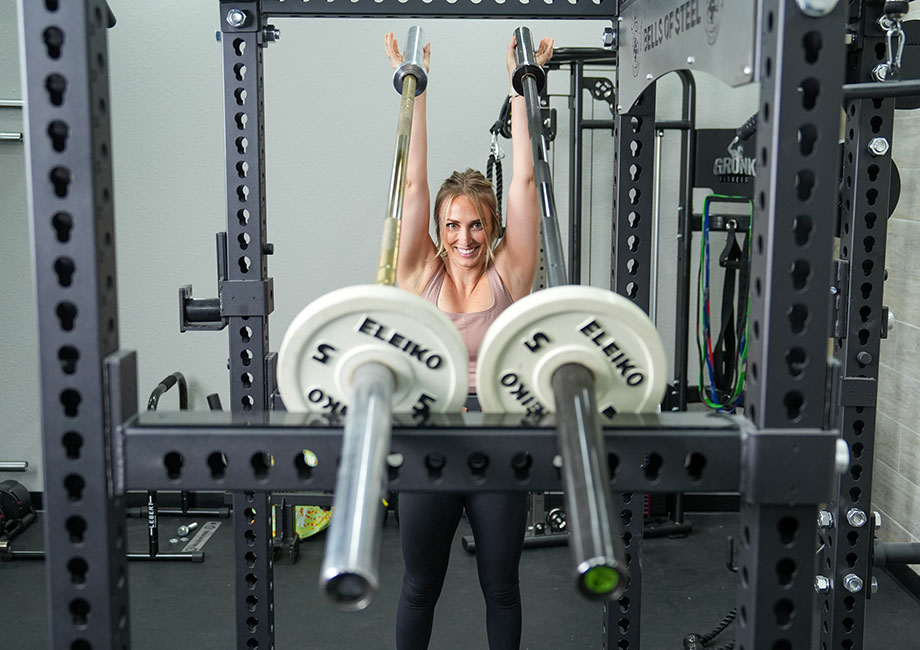We test and review fitness products based on an independent, multi-point methodology. If you use our links to purchase something, we may earn a commission. Read our disclosures.
The Viking press hails from the world of strongman. It offers versatility unmatched by traditional vertical pressing exercises like the military and dumbbell overhead press. Its distinctive arched bar path and neutral grip alleviate strain, making it ideal for lifters with limited shoulder or thoracic mobility or those navigating training setbacks.
Over the past decade, I’ve leaned heavily on the Viking press, Viking push press, and other variations when training clients or athletes. Its versatility offers many options, catering to a diverse range of goals. Whether you want to boost strength, build muscle, or improve your overhead power and explosiveness, the Viking press delivers.
You don’t have to be preparing for a strongman competition to reap the benefits of this one-of-a-kind exercise, either. Join me as I dive into a full Viking press tutorial, cover variations and alternative exercises, and unpack the benefits of adding this underrated push-day movement to your weightlifting regimen. Skol!
RELATED: Push-Day Exercises
How To Do the Viking Press
The Viking Press is a compound exercise that offers lifters the choice between a dynamic dip-and-drive or a stricter execution. Your lower body provides a sturdy base under the Viking Press attachment, allowing your shoulders, upper chest, and triceps to exert force on the bar, driving it through an arched bar path until reaching a full lockout position.
How to do it:
- Load a Viking press attachment (or two barbells) with your preferred weight.
- Position yourself with your feet about shoulder-width apart under the Viking press handle. Maintain a slight bend in your knees.
- Lift the handles to shoulder height with your elbows bent.
- Brace your core and push the handles upward until your arms are fully extended.
- Lower the handles back to shoulder height.
- Repeat for desired reps and sets.
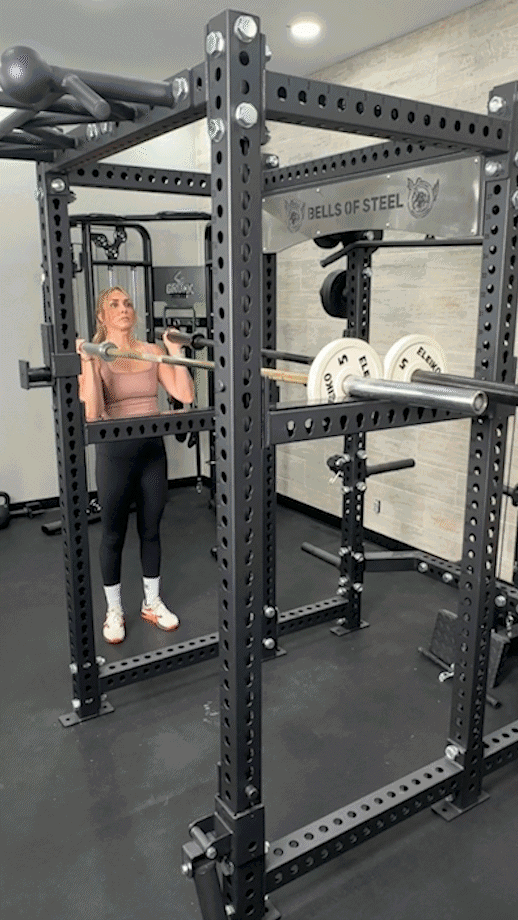
Modifications
- Dial it back: Scale back your intensity by reducing your weight or your number of sets and reps (aka volume). You can also practice with a dumbbell push press before attempting the Viking press.
- Make it harder: Use tempos and pauses to elevate your intensity beyond simply increasing weight or volume. Consider adjusting your grip position; with a Viking press attachment, opting for a wider, pronated (or overhand) grip can effectively isolate your delts. Additionally, partial reps1 have been shown in studies to be effective for stimulating muscle growth.
How To Do the Viking Press At Home
To do the Viking press in your home gym, you can use a landmine attachment or stacked bumper plates on the floor, but the Viking press attachment is the most ideal. (Make sure you have one of the best Olympic barbells handy.) Alternatively, performing a two-handed landmine press or push press variation can replicate the arched bar path, engaging the delts, triceps, upper chest, and core muscles.
RELATED: Titan Fitness Neutral–Grip Viking Press Handle
Viking Press Variations
- Double barbell Viking press: To perform the double barbell Viking press, you’ll need two barbells of equal length and a power rack. This variation closely mimics the neutral grip position, stimulating shoulder and core stability.
- Viking push press: This push press alternative helps shift your training goals towards developing power and explosiveness. Compared to its strict press counterpart, the Viking push press utilizes a dip and drive phase leaning on your lower body to enhance the exercise’s speed and power.
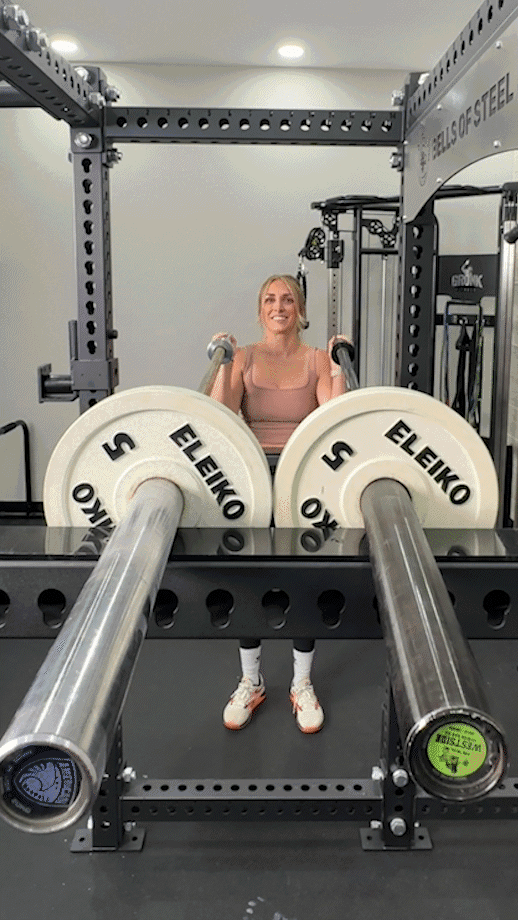
Viking Press Alternatives
Don’t have access to the gym equipment needed to conquer the Viking press? Fear not! Check out these Viking press alternatives to enhance your pressing strength, paving the way for muscle mastery, strength supremacy, and personal peak performance.
Military Press
Why do it: The military press, the vertical counterpart to the bench press, aka the shoulder or overhead press, is one of the most basic yet fundamental expressions of upper-body strength. It’s a vital compound exercise for your exercise library, specifically for developing your shoulders, upper back, and core.
How to do it:
- Rack a barbell at shoulder height with your preferred weight.
- Grab the barbell with an overhand grip, positioning your hands slightly wider than your shoulders and keeping your elbows up and even.
- Take a few steps back from the rack and press the barbell overhead until your arms lock out.
- Lower the barbell slowly back toward your upper chest.
- Repeat for the desired reps, then re rack the barbell before repeating continuing the sets.
Expert tip: Opt for the dumbbell variation of the military press for a greater range of motion, especially if your overhead mobility isn’t optimal.
RELATED: Best Shoulder Exercises
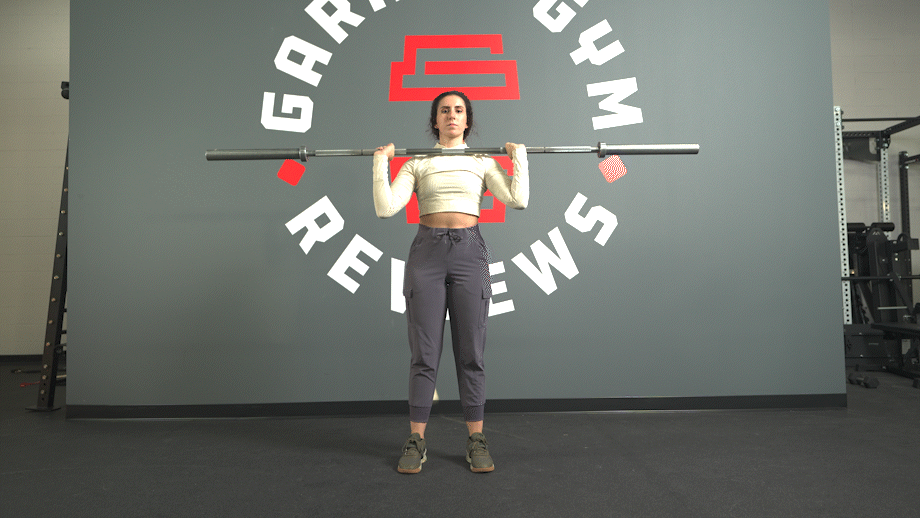
Push Press
Why do it: The push press is a power-building exercise and a progression of the military press. The dip-and-drive phase helps enhance speed and power in your legs while increasing the amount of weight you can lift overhead—when done with proper technique, of course.
How to do it:
- Rack a barbell at shoulder height with your preferred weight.
- Position your hands slightly wider than your shoulders with an overhand grip, keeping your elbows up and even.
- Step back and position your feet hip-width apart, with your core tight, and back flat.
- Dip with your knees pointed slightly outward.
- Drive with your legs out of the dip and then explosively push the barbell overhead.
- Once locked out, slowly lower the weight back to the starting position.
- Repeat for the desired reps, then re rack the barbell before repeating continuing the sets.
Expert tip: Utilize your legs to initiate the lift, propelling the bar off the shoulders. Then, engage your arms in the final pressing phase as you reach the top of the movement. Repeat this mantra: Push with your legs, press with your arms.
RELATED: Push Press Exercise
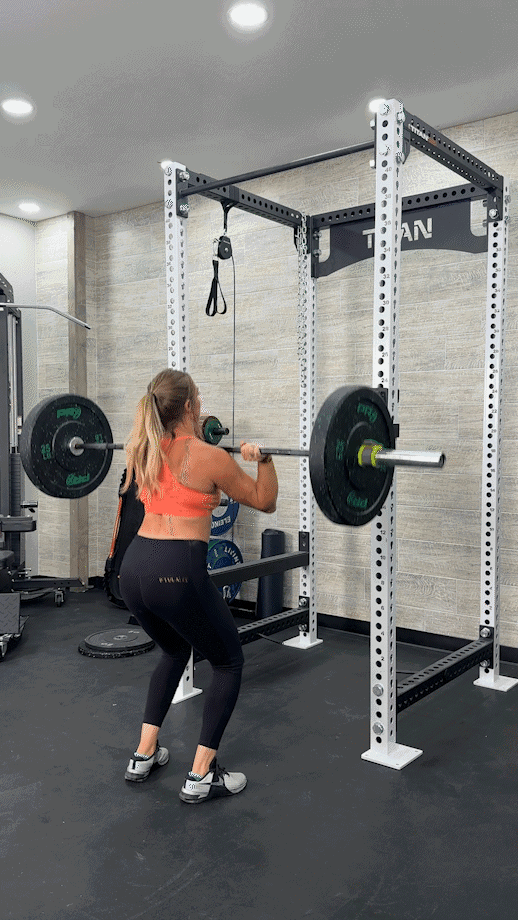
Machine Shoulder Press
Why do it: The fixed motion of the machine shoulder press lets you isolate your shoulders while showing love to your triceps. It’s effective for driving hypertrophy adaptations, especially when placed toward the end of a workout following compound exercises. I find the machine shoulder press ideal for clients who struggle with the intensity of dumbbell or barbell military presses, whether due to limited overhead mobility or recovering from an injury. If you don’t have a strict shoulder press machine, a Smith machine shoulder press is a good substitute.
How to do it:
- Adjust the seat height so your feet are flat on the floor, and your knees are at about 90 degrees. Sit with your back flat against the machine’s backrest.
- Grab the shoulder press handles with an overhand grip.
- Push the handles upward until your arms are straight.
- Slowly lower the handles back to the starting position.
- Repeat for desired reps and sets.
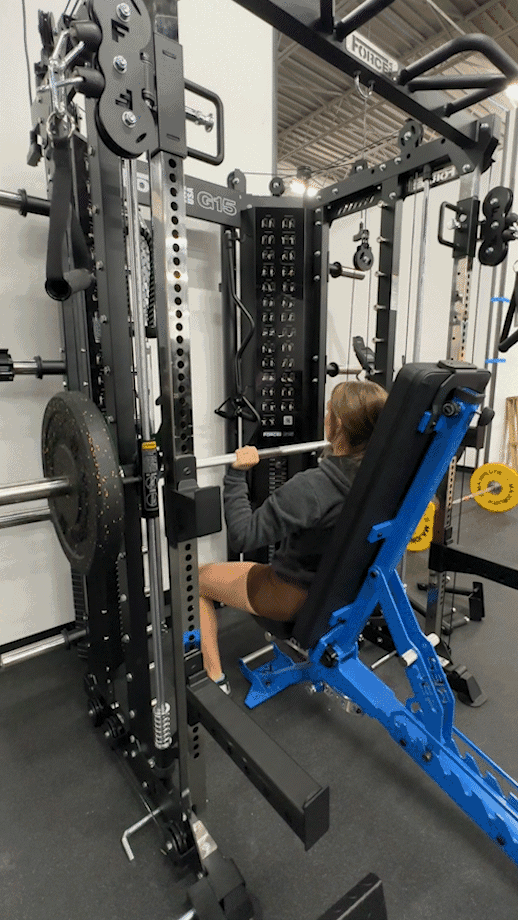
Landmine Press
Why do it: The landmine press closely resembles a unilateral version of the Viking press. It effectively targets your shoulders, upper chest, and triceps while engaging your core for stability. Unlike traditional overhead presses, the landmine Press offers a more natural pressing angle, reducing strain on your shoulders and minimizing your risk of injury. Lastly, its unique rotational movement pattern helps develop stability and functional strength.
How to do it:
- Load a barbell and secure it in a landmine attachment. Stand facing the landmine attachment.
- Lift the barbell to around chest height, aligning the end of the barbell with your right shoulder.
- Release your left hand, keeping the barbell in your right hand.
- Brace your core and press the barbell slightly forward until your right arm is straight.
- Hold briefly, then lower the barbell back to the starting position.
- Repeat for the desired reps, then switch sides and repeat the set.
Expert Tip: Explore variations for the landmine press, including single-arm or double-arm variations, push press, and thrusters. Experiment with different stances such as staggered, half-kneeling, or tall-kneeling to explore various planes of motion and core engagement.
RELATED: 10 Best Landmine Exercises
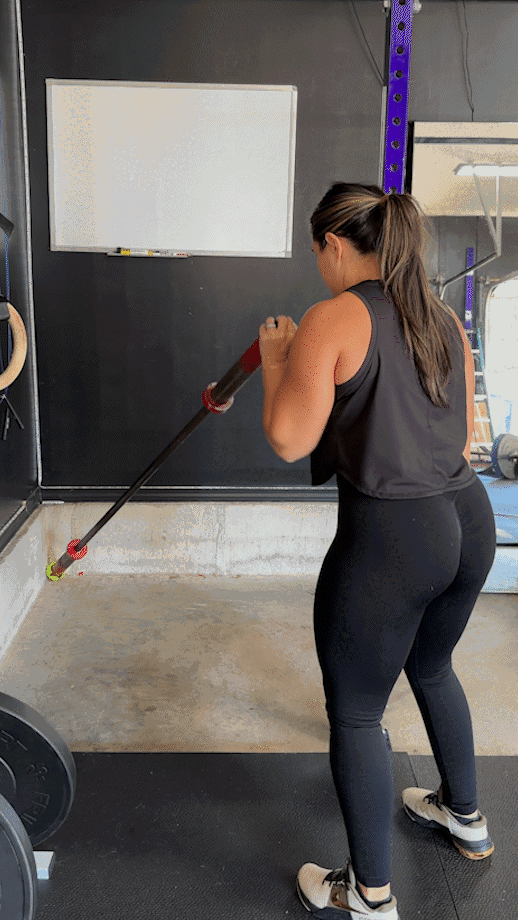
Benefits of the Viking Press
While it may look a little unconventional, this exercise is unparalleled in fostering upper-body strength and size while enhancing pressing performance in itself and other compound lifts. Embracing the Viking Press introduces a dynamic dimension to your workout routine, propelling you toward your fitness goals with unmatched efficiency and effectiveness.
It’s Versatile
The Viking press offers versatile training options, making it a valuable addition to any strength training regimen. Unlike traditional vertical pressing exercises, the Viking press utilizes a unique arched bar path, which reduces strain on your shoulders and allows for a more natural range of motion. This feature mainly benefits lifters with limited shoulder mobility or those navigating training setbacks.
As a certified strength and conditioning specialist (CSCS), I favor the Viking press most because it can be adapted to suit various fitness goals, whether increasing overall strength, building muscle mass, or improving athletic performance. It also allows you to adjust your weight, tempo, and grip position, providing endless possibilities for tailored workouts that isolate specific muscle groups and promote overall functional strength.
It May Be Easier On Your Joints
The Viking Press offers a mobility-friendly option for those with limited or restricted shoulder, thoracic spine, or anterior (front) chest mobility. As mentioned previously, its natural bar path is arched, leading to more engagement in your vertical and horizontal pressing muscle groups. This unique bar path also allows for effective muscle-building movement without the heavy demands on your joints.
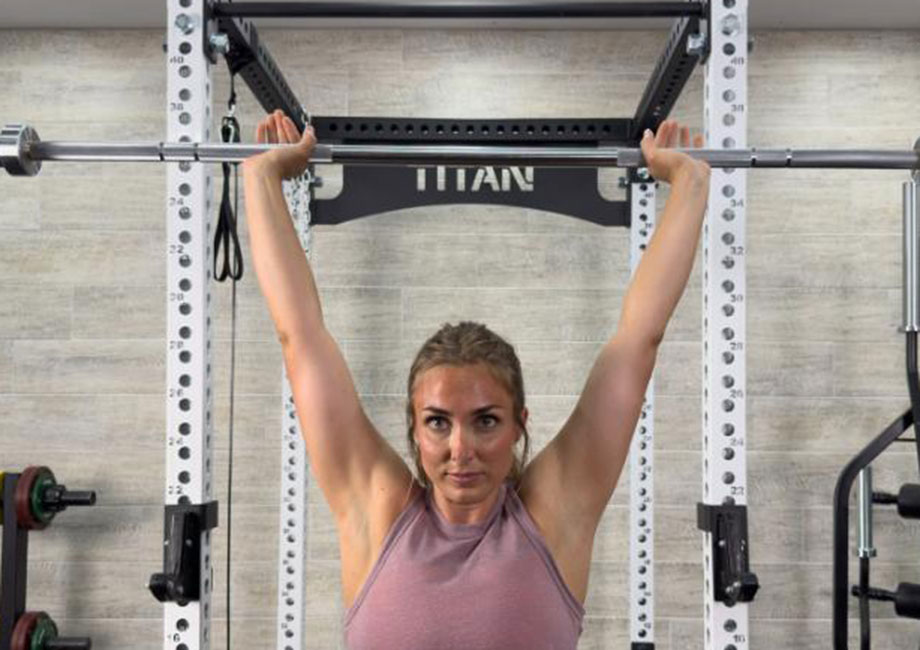
RELATED: Mobility Exercises
Another mobility-friendly bonus is the Viking press’s neutral grip. This hand placement significantly enhances your shoulder mobility and stability while reducing strain on your wrists, elbows, and shoulders. It encourages a more natural pressing motion, promoting better alignment and reducing the risk of injury.
It May Help Improve Your Overhead Pressing Strength
This one’s pretty straightforward: the Viking Press improves pressing strength. Leveraging the unique handle position, set further from the body than in traditional military or dumbbell shoulder presses, the Viking Press allows for moving heavier loads. Moreover, you can amplify your gains even more by incorporating variations like the Viking push press and experimenting with stances such as tall-kneeling, half-kneeling, or staggered stances.
Common Viking Press Mistakes
Whether introducing the Viking Press into your training routine or looking to improve your technique, you need to be aware of these three common Viking Press mistakes you could run into.
Body-to-Handle Placement Is Off
Placing your body too close or too far from the handles can compromise the biomechanics and impose unintentional strain on your joints, limiting the exercise’s effectiveness. Make sure to position the handles at a comfortable distance, allowing for a smooth, natural range of motion and engaging your muscles appropriately.
You’re Overarching Your Lower Back
Excessively arching the lower back during the press can strain the lumbar spine, increasing the risk of injury. Maintaining a neutral spine throughout the movement is vital for safeguarding your back and optimizing core engagement. Neglecting core activation during the Viking Press can compromise stability and overall performance. Brace your abs to sustain tension throughout the exercise.
You’re Using Too Much Momentum
While utilizing the dip and drive of the lower body is essential for driving momentum, relying on excessive momentum will compromise the integrity of the Viking Press and possibly put you in harm’s way. Focus on controlled, smooth movements to nail the transitions.
Muscles Worked by the Viking Press
Understanding the interplay of your deltoids, triceps, pectoralis major, serratus anterior, and core muscles involved in the Viking press is crucial for optimizing your training and helping you to target your goals:
- Deltoids2: These muscles, including the anterior and medial deltoids, are responsible for lifting and stabilizing your arms overhead during the Viking press, ensuring shoulder stability and strength.
- Triceps Brachii3: The triceps extend your arms during the press, contributing to the lockout phase of the movement and overall pressing power.
- Pectoralis Major4: The upper fibers of your pectoralis major (clavicular area) are engaged to aid in shoulder flexion and stabilization during the upward phase of the press.
- Serratus Anterior5: The serratus anterior helps stabilize your shoulder blades and enhance movement along your rib cage during pressing motions.
- Core muscles6: The core is made up of your rectus abdominis, transverse abdominis, and obliques, which stabilizes your torso throughout the movement. A strong core provides a solid foundation for the Viking press and minimizes our risk of injury.
Viking Press: Final Thoughts
The Viking press can add variety to your push workouts. It’s also great for training your delts, triceps, and upper chest while calling on your core for assistance.
Here’s a quick refresher on how the Viking press stands as a viable alternative to traditional overhead presses:
- The Viking Press may help improve upper-body pressing strength.
- It engages key muscle groups, including your deltoids, triceps, chest, and core
- It offers multiple variations for movement and grip
- It benefits lifters with restrictive mobility or those navigating injury, as the bar path reduces strain on your shoulders
Viking Press: FAQs
What’s the difference between a military press and a Viking press?
Typically, individuals perform the military press by pressing a barbell, dumbbells, or kettlebells overhead while standing or seated, targeting the shoulders and triceps with a vertical press.
In contrast, the Viking press involves using a specialized machine or a barbell in a landmine with Viking press handles attached. It emphasizes shoulder, triceps, and core strength while incorporating various base positions (standing, staggered stance, etc.) and more dynamic movements than the traditional military press.
The Viking press also moves through a slightly less vertical pressing motion—picture an arching motion—than the military press.
RELATED: Overhead Press
What’s a good weight on a Viking press?
A good weight for a Viking press depends on your strength and fitness level. As a general guideline, try to select a weight that allows you to perform 8 to 12 repetitions with proper form while still feeling challenged by those last few reps.
Adjust the weight to maintain this rep range and ensure you’re activating your muscles without sacrificing form. Start with a lighter weight if you’re new to the exercise, and gradually increase as you progress and feel more comfortable with the movement.
A best practice is to perform a few warm-up sets. Warm-up sets help you acclimate to the movement and activate the appropriate muscles for the exercise.
What are the benefits of the Viking press attachment?
Short answer: using the Viking press attachment is much easier than setting up two parallel barbells.
Long answer: the Viking press targets muscle groups comparable to traditional vertical pressing exercises. In a December 2022 study in Sensors (Basel)7, researchers noted that the overhead press elicited muscle activity in the deltoids, triceps, upper chest (clavicular area), serratus anterior, and rotator cuff muscles. It’s particularly beneficial for those with limited shoulder mobility, offering a gentler alternative to the barbell military press due to its neutral grip and arching bar path. The Viking press into your routine introduces valuable variety, which can be instrumental in overcoming stagnation in upper-body strength development.
References
- Wolf, Milo, et al. “Partial Vs Full Range of Motion Resistance Training: A Systematic Review and Meta-Analysis.” International Journal of Strength and Conditioning, vol. 3, 2023, doi:10.47206/ijsc.v3i1.182.
- Kenhub. Deltoid Muscles. Accessed April 24, 2024. Available from: https://www.kenhub.com/en/library/anatomy/the-deltoid-muscle
- Kenhub. Triceps Brachii. Accessed April 24, 2024. Available from: https://www.kenhub.com/en/library/anatomy/triceps-brachii-muscle
- Kenhub. Pectoralis Major. Accessed April 24, 2024. Available from: https://www.kenhub.com/en/library/anatomy/major-pectoralis-muscle
- Kenhub. Serratus Anterior. Accessed April 24, 2024. Available from: https://www.kenhub.com/en/library/anatomy/serratus-anterior-muscle
- Kenhub. Anterior Abdominal Muscles. Accessed April 24, 2024. Available from:
- https://www.kenhub.com/en/library/anatomy/anterior-abdominal-musclesBłażkiewicz, Michalina, and Anna Hadamus. “The Effect of the Weight and Type of Equipment on Shoulder and Back Muscle Activity in Surface Electromyography during the Overhead Press-Preliminary Report.” Sensors (Basel, Switzerland) vol. 22,24 9762. 13 Dec. 2022, doi:10.3390/s22249762
Further reading

In our Evie Ring review, we discuss the pros and cons of this wearable smart ring with a focus on women’s health. Read more

Check out the best unflavored protein powders for a tasteless protein boost that blends seamlessly into your favorite foods without artificial ingredients. Read more

Are you looking for one of the best lower body workouts to do on your next leg day? Look no further and check this one out! Read more

Are you ready to next level your kettlebell game? Today, we’re talking about the kettlebell snatch and why you should use this total-body blaster! Read more

